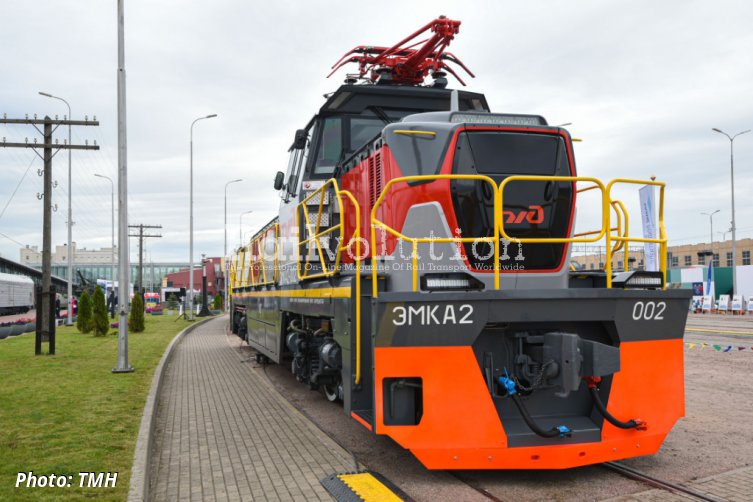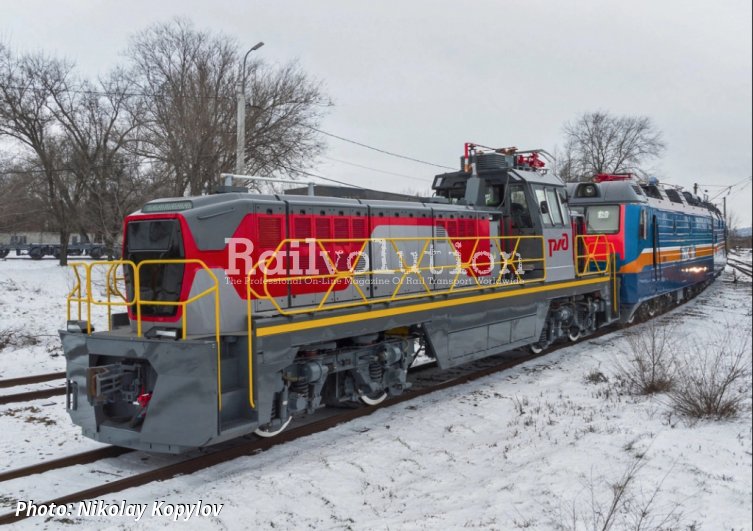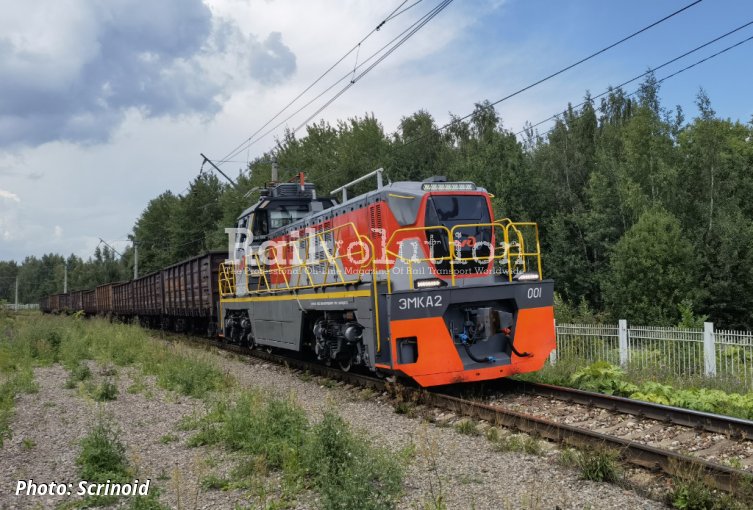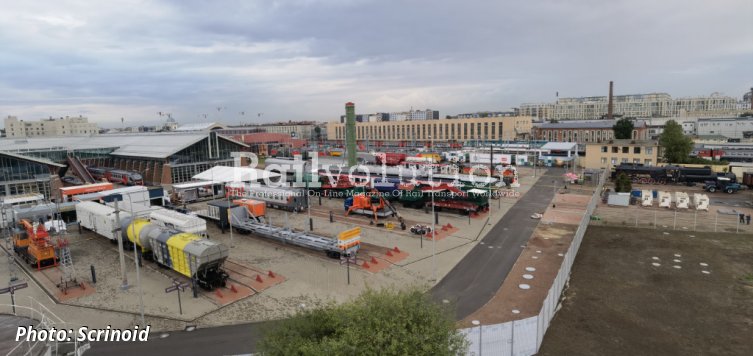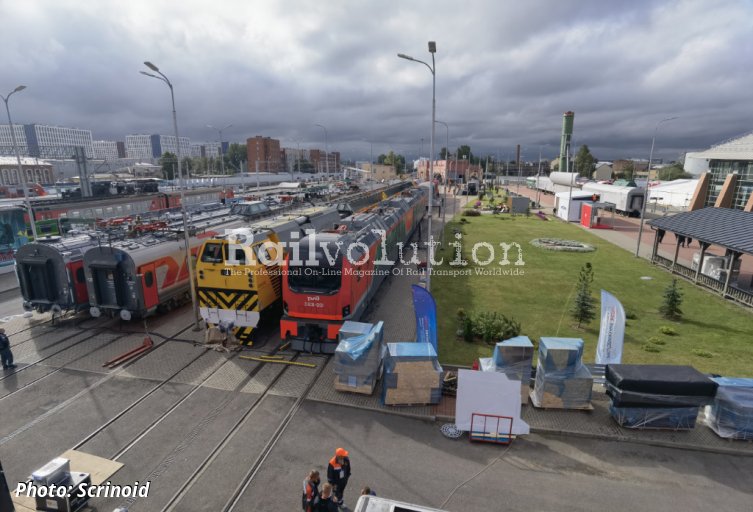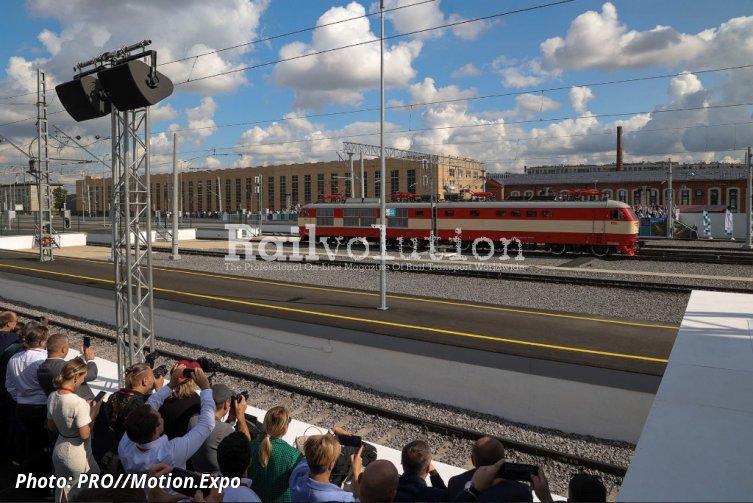PRO//Motion.Expo 2023 (1)
posted on 9th Oct 2023 08:42
Between 24 and 27 August, PRO//Dvizhenie.Expo (PRO//Motion.Expo, originally EXPO 1520) took place. However, this year's 11th edition of the most important exhibition in the area of 1,520 mm gauge railways took place for the first time not in Moskva (or at the VNIIZhT test centre in Shcherbinka), but in St. Peterburg, at the Museum of Railways of Russia.
According to the organiser, the transport publishing house Gudok, the exhibition had an exhibition area of 7,000 m2 in pavilions and open space, with over 1,000 m of track available. There were 130 exhibitors, including 15 foreign exhibitors (with Chinese companies prominent among them), while rolling stock manufacturers and freight operators brought 30 exhibits.
Thursday and Friday, 24 and 25 August, were the main days reserved mainly for experts. The weekend of 26 and 27 August was intended for the general public and, as usual, was associated with the "Open Railways Day" event, which included access to RZD facilities. Thus, in the area of the Baltiysky vokzal, with which the Museum of Railways of Russia is adjacent, "legendary historic locomotives in motion, from various operating steam locomotives to the world's most powerful passenger locomotive - ChS6" were on display, replacing the formerly usual cavalcade of (old and new) vehicles on the VNIIZhT circuit in Shcherbinka.
As usual, Transmashholding was the biggest exhibitor; it brought five vehicles to St. Peterburg: the Class EMKA2 and TEM23 locomotives, the Class EP2DM EMU, the end car for the Ivolga 4.0 EMU and the Baltiets metro set in a new paint.
On 25 August, the EMKA2 was presented at a ceremony. Its name also reflects its operational purpose, as it is an abbreviation formed from the words Elektrovoz Manevrovy Kontaktno-Akkumulyatorny, i. e. an electric shunting locomotive with catenary and battery power. The digit "2" here characterises the designation for the 3 kV DC power supply. The manufacturer is the NEVZ and EMKA2 is the first electric shunter in the modern history of Russian transport engineering.
Before that, two classes of electric shunting locomotives with a central driver's cab had been produced for the SZD during the USSR era:
- VL41 (78 locomotives, built 1963 - 64, axle arrangement Bo'Bo', power supply 25 kV 50 Hz),
- VL26 (10 locomotives, built 1966 - 67, axle arrangement Co'Co', power supply 3 kV DC, also equipped with accumulators for operation outside electrified tracks).
However, neither of these classes proved to be very successful in operation for various reasons, and so there was no large batch production, as was usual for railways in the Soviet Union. This should be reversed by the contemporary EMKA2 - which has already surpassed both classe in terms of numbers of locomotives, as in June 2019 RZD, TMH and Rosnano signed an agreement to create environmentally friendly hybrid shunters, under which RZD is to receive 131 machines within six years of taking delivery of the first one.
The EMKA2 is intended for service in depots and large passenger stations where the use of diesel shunters is undesirable for environmental reasons; it can also be deployed in industrial facilities. The locomotive is of modular construction and its "DNA design", now being introduced for the new-built TMH vehicles, is the same as that of the Class TEM23, the first prototype of which was built in 2021.
EMKA2 has a top speed of 90 km/h, a Bo'Bo' axle arrangement with asynchronous traction motors and a power output of 2,000 kW. The length over couplings is 16,450 mm, the weight in working order is 92 t and the minimum radius of curve negotiable is 80 m. TMH states that over 90 % of the components used in the locomotive are of Russian origin.
The supplier of lithium-ion traction batteries is TechnoSpark, Moskva. They are designed to withstand locomotive storing in winter at temperatures down to -40 °C and can be recharged from the catenary via a pantograph (while the vehicle is running or stationary) or from an external 380 V 50 Hz socket. In battery mode, the EMKA2 is designed to be able to haul a 2,000 tonne train over a distance of up to 14 km or a rake of 20 double-deck passenger coaches over a distance of up to 20 km. When running alone, the locomotive is expected to travel up to 100 km. So far, two prototypes have been built in Novocherkassk: the EMKA2-001 in 2023 and the EMKA2-002 in 2023.

